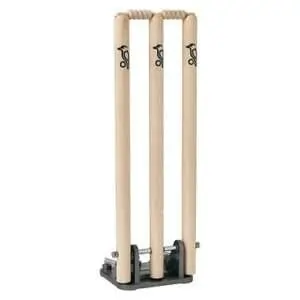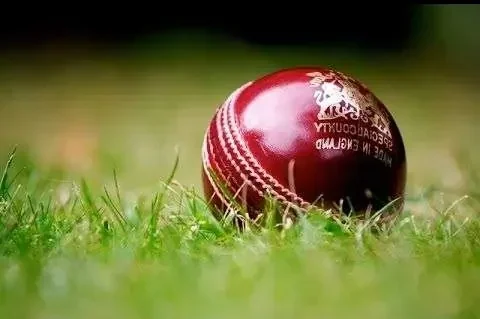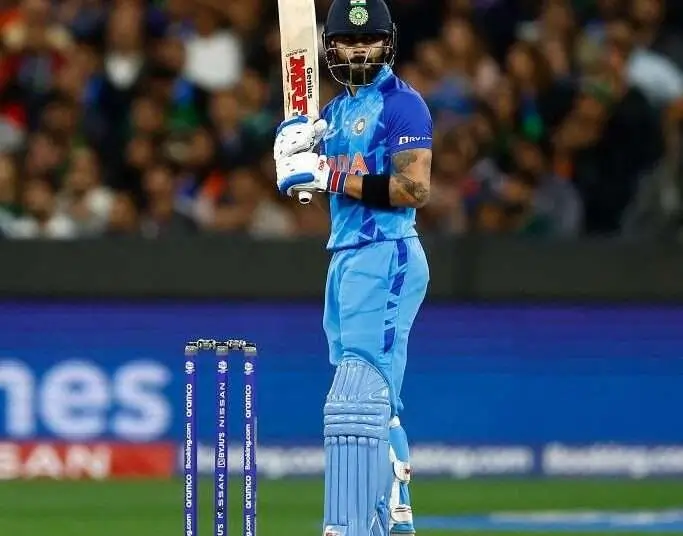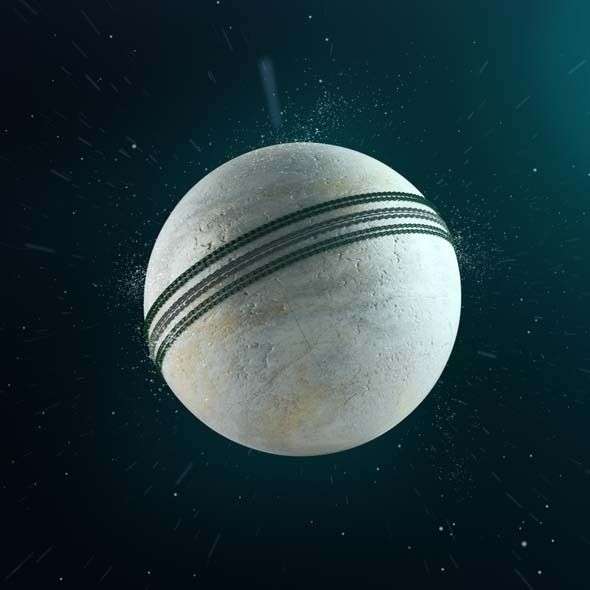How Long is a Cricket Stump
Curious about those wooden posts a cricket batter guards? The wickets, as they’re called, are all the same height! Each one stands at a whopping 28 inches, which is a bit more than two regular-sized feet. So next time you watch cricket, you can impress your friends with your knowledge of wicket height!
The stumps are topped by two bails, which are dislodged when the stumps are struck by the ball. This indicates that a wicket has been taken. Cricket, a popular sport globally, hinges on the strategic interaction between the bowler and batsman, with the stumps being a pivotal component in the game’s dynamics.
The Evolution of Cricket Stumps
The history of cricket stumps dates back to the early days of the sport when the equipment was rudimentary and the rules were still evolving. Over time, the concept of stumps has evolved to ensure fairness, accuracy, and standardization in the game.
Standard Dimensions of a Cricket Stump
The Standard Length of Cricket Stumps
The length of a cricket stump is 28 inches (71.1 cm). This length is set by the Laws of Cricket, which are governed by the Marylebone Cricket Club (MCC). This standard applies across all levels of cricket, from international matches to local games.
Cricket stumps are cylindrical poles made of wood, typically ash or willow, though some are now made from composite materials. The stumps are driven into the ground to form the wicket, with three stumps positioned at each end of the pitch. The stumps are evenly spaced, and the bails, two small wooden pieces, sit atop the stumps to complete the wicket.
Dimensions of a Cricket Stump
Along with the length, a cricket stump also follows standardized width and spacing dimensions, ensuring consistency across games. Let’s take a closer look at the specifics:
- Length: 28 inches (71.1 cm)
- Diameter: The diameter of a stump is typically around 1.38 inches (3.49 cm), though the Laws allow some slight variation.
- Spacing Between Stumps: The distance between each stump is crucial. They are positioned so that the total width of the wicket (including the gaps between stumps) is 9 inches (22.86 cm).

This uniformity ensures that every bowler and batsman, regardless of where they play, faces a consistent challenge when it comes to targeting or defending the stumps.
The Material Used for Stumps
Traditionally, cricket stumps were made from wood, typically ash, which is known for its durability and resilience. However, recent innovations have introduced variations, including composite materials that aim to enhance the stumps’ longevity and performance.
Why are Stump Dimensions Crucial?
The standard dimensions of cricket stumps are not just arbitrary measurements; they have a profound impact on the game’s fairness and consistency. These dimensions ensure that bowlers have a consistent target to aim for, regardless of the pitch conditions.
The Role of Stumps in Cricket
Bowling and Stump Dismissals
One of the most exciting aspects of cricket is the art of bowling, where bowlers attempt to dismiss batsmen by hitting the stumps. A clean hit to the stumps results in a spectacular display as the bails are dislodged from the stumps.
Stumps in Fielding Drills
Stumps are not only integral to the actual gameplay but also play a role in fielding drills. Fielders practice run-outs by accurately hitting the stumps, adding an element of precision and strategy to their training.

Innovations and Variations in Stump Design
LED Stumps
In recent years, cricket has witnessed innovative advancements in stump technology. LED stumps, equipped with sensors and lights, add a visual spectacle to the game, especially during limited-overs matches played under floodlights.
Colored Stumps
To enhance visibility, colored stumps have been introduced. These vibrant stumps not only aid players but also add to the aesthetics of the game.
The Impact of Stump Mic on the Game
The stump mic in cricket has undeniably revolutionized the game by providing fans with unprecedented insights into the on-field action and players’ interactions. This technology, which places a microphone near the stumps to capture the sounds of the game, has brought an added layer of excitement and engagement to cricket enthusiasts worldwide.
The stump mic has amplified the drama of the game, allowing viewers to eavesdrop on the banter, sledding, and strategic discussions between players in the heat of the moment. While it offers fans a more immersive experience, the stump mic has also sparked debates about privacy and the need to strike a balance between raw, unfiltered content and maintaining the spirit of sportsmanship.
Maintaining Stump Integrity
Maintaining stump integrity is a critical aspect of ensuring fair and accurate outcomes in cricket matches. Stumps, being an integral part of the game, need to be in pristine condition to facilitate consistent and reliable decisions by the umpires, especially in cases of run-outs and stumpings.
Proper maintenance of the stumps involves regular inspection to ensure they are correctly positioned and firmly planted in the ground, preventing any potential wobbling or displacement that could lead to erroneous judgments. Umpires and ground staff collaborate closely to ensure that the stumps meet the required standards and that the playing surface around them is even and well-maintained.
The Psychological Aspect of Stumps
The psychological aspect of stumps in cricket extends beyond their physical presence on the field, delving into the realm of players’ minds and emotions. Stumps represent both opportunity and challenge, symbolizing the ultimate goals of scoring runs and taking wickets. Batsmen draw motivation from the sight of stumps, visualizing their shots and finding gaps and boundaries.
Bowlers see them as targets to be hit with precision. Conversely, the abrupt toppling of the stumps can trigger elation or despair, influencing players’ confidence and momentum. The rhythmic knocking sound as the ball hits the stumps amplifies the pressure on batsmen and bowlers alike, serving as a reminder of the game’s unforgiving nature.

How Stump Length Affects Bowling Tactics
The length of the stumps in cricket significantly influences the bowling tactics employed by bowlers to target specific areas and exploit batsmen’s weaknesses. The standard height of stumps is essential for maintaining fairness and consistency across matches, but slight variations in the length can impact a bowler’s approach. Shorter stumps can encourage bowlers to aim for a fuller length, enticing batsmen to play forward and potentially induce edges or dismissals in the slip cordon.
On the other hand, taller stumps might prompt bowlers to focus on a back-of-length delivery, aiming to exploit any uncertainty in a batsman’s footwork. Adjustments in stump length can also affect the angles of deliveries, with shorter stumps favoring outswing and taller stumps assisting inswing. Additionally, bowlers might alter their strategies based on the pitch conditions and the nature of the opposition’s batting lineup.
Famous Stump-Related Moments in Cricket History
Cricket history is punctuated with iconic moments centered around the stumps, each leaving an indelible mark on the sport’s legacy. One such instance occurred during the 2003 ICC Cricket World Cup semi-final when Australia’s bowler Shane Warne delivered his “Ball of the Century” to England’s Mike Gatting. The ball spun prodigiously, beating Gatting’s bat and dislodging the off-stump in a breathtaking display of skill.
Another unforgettable moment took place in the 2019 Ashes series when England’s Ben Stokes played an innings for the ages, with the stumps as a constant backdrop to his heroic efforts. Equally memorable was West Indies’ Courtney Walsh refusing to run out Pakistan’s Saleem Jaffar in a 1987 Test match, demonstrating sportsmanship by deliberately missing the stumps.
Stump-Related Records
Stump-related records in cricket stand as a testament to the pivotal role these simple yet crucial elements play in shaping the game’s outcomes. One of the most impressive records is held by Sri Lanka’s wicketkeeper-batsman, Kumar Sangakkara, who accounted for 678 dismissals (stumpings and catches combined) across formats during his illustrious career.
This record highlights the art of collecting the ball cleanly and efficiently, both when it reaches the keeper’s gloves and when the bails are removed in lightning-quick stumpings. Another notable achievement is that of former Indian cricketer Anil Kumble, who claimed all 10 wickets in an inning against Pakistan in 1999, cementing his place in history and etching his name into the annals of cricketing folklore.

Cricket Umpires and Stump Maintenance
Cricket umpires play an essential role not only in making on-field decisions but also in ensuring the proper maintenance of the stumps. Umpires closely monitor the condition of the stumps before and during matches to guarantee their stability and alignment.
They collaborate with the ground staff to ensure that the stumps are correctly positioned, securely planted, and meet the required standards. This meticulous attention to stump maintenance is crucial for accurate run-out and stumping decisions, as any wobbling or displacement could lead to incorrect judgments that could impact the course of the game. Umpires also oversee the replacement of bails in case they are dislodged during play.
Conclusion
The cricket stump, seemingly unassuming, holds immense significance in the game of cricket. Its dimensions, history, and role intertwine to create a foundation that defines the sport. From being a target for bowlers to a psychological tool, the stump continues to play a central role in cricket’s past, present, and future.
FAQs
Q1: Can the dimensions of the cricket stump vary in different formats of the game?
Yes, the dimensions of the cricket stump remain consistent across all formats of the game, including Test matches, One Day Internationals (ODIs), and Twenty20 (T20) matches.
Q2: Are LED stumps used in every cricket match?
LED stumps are primarily used in limited-overs matches played under floodlights, enhancing the visual spectacle and viewer experience.
Q3: How are stump-related records tracked and maintained?
Stump-related records, such as most stumpings by a wicketkeeper, are meticulously tracked by cricket statisticians and governing bodies.
Q4: Can stump height be adjusted for junior or amateur cricket?
In junior or amateur cricket, stump height may be adjusted to accommodate the players’ age and height while adhering to the basic principles of the game.
Q5: What role do stump microphones play in the game?
Stump microphones capture on-field conversations and banter, providing fans with an intimate look at the players’ interactions and strategies.










